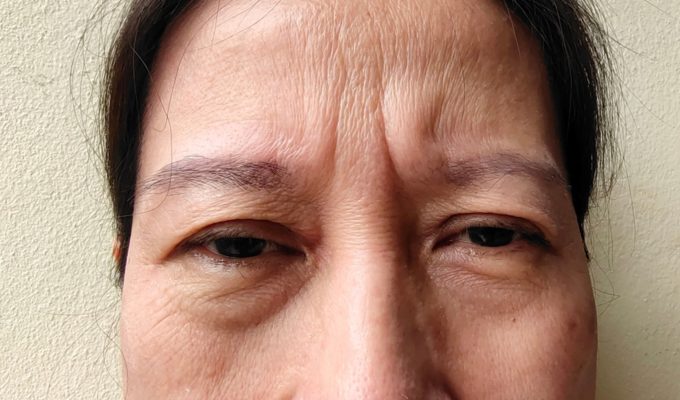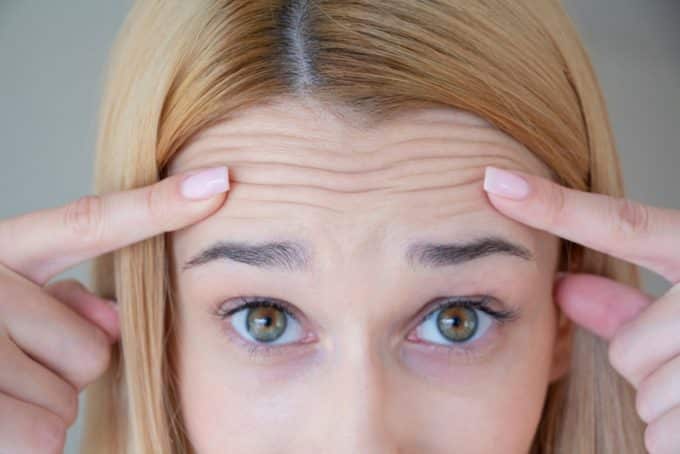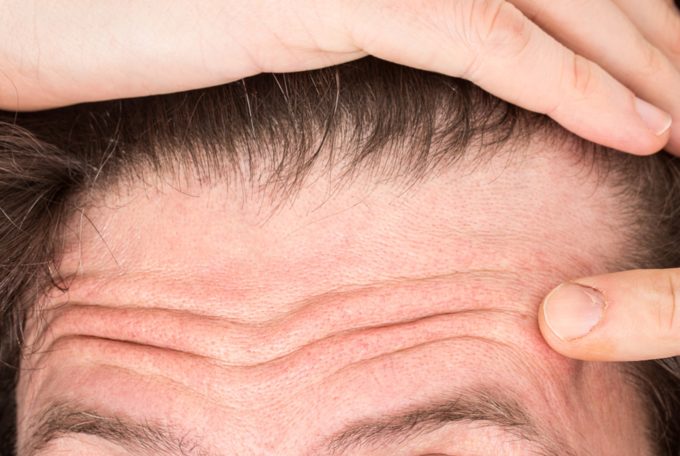Are Your Forehead Lines Wavy or Straight?
Optimizing Your Outcome After Neuromodulator Treatment
An open-access article just published by the Oxford University Press (2022) on behalf of the Aesthetic Society reviews the importance of assessing the frontalis muscle when analyzing a patient for Botulinum toxin type A (BoNTA) treatment such as with Botox or the first-in-its-class, Daxxify.

Muscle Placement for Botulinum Toxin
Most practitioners understandably focus on treating the corrugator muscles as the primary goal of treatment. There is a delicate balance between the frontalis muscle that elevates the brows and the depressor muscles that pull the brows down. This becomes more of a problem as the effects of aging add sagging or “ptosis” of the eyebrows. If this balance is not accounted for, a patient can develop an unnatural arching or elevation of the lateral brows. These are sometimes called “McDonald’s arches” or “Spock” eyebrows.
It has typically been taught to place the botulinum toxin injection for the corrugator muscles (the ones that cause the “11” frown lines) a finger width above the eyebrows. However, this placement weakens some of the frontalis muscle and allows the medial eyebrows to drop. Additionally, new studies show that the corrugator muscle is actually deep (near the bone) at the hairy part of the medial brow and becomes superficial (near the skin) somewhere just above the medial third of the brow.

More precise placement not only targets the muscle more directly, which can improve the duration and effect in new studies but also avoids targeting the lower portion of the frontalis muscle which can cause a lowering of the medial brow and a quizzical shape or “Spocking” of the lateral brows.

Wavy vs. Straight Horizontal Forehead Lines

Another factor to assess when analyzing a patient for BoNTA treatment is a newly understood variation in the anatomy of the forehead muscles.
The lines created by muscle activity are perpendicular or at right angles to the muscle pull.
42-45% of people have straight horizontal forehead lines, and these patients have a solid sheet of frontalis muscle and a more constant shape of the eyebrow arch on elevation, with a more similar amount of elevation of the medial and lateral brows.
45-58% of patients have wavy-shaped or mild to no central forehead lines, indicating a midline aponeurosis (sheet of fibrous tissue) of the frontalis muscle. In these patients, there is a much weaker to no upward pull by the frontalis muscle in the midline. The amount of natural pull and elevation in the muscles will determine the best injection site for Daxxify or Botox injections.
Why Does Forehead Line Shape Matter?
Whether you have wavy or straight forehead lines can make a difference in keeping a natural shape to the eyebrows and a natural appearance after your next botulinum toxin treatment. If a patient has wavy lines and botulinum toxin injections are placed in the middle forehead, there is a greater likelihood of the middle forehead and brow drooping since there is already less frontalis muscle to pull up in the midline. So, when a doctor is assessing you next for BoNTA treatment, make sure they consider whether your forehead lines are wavy or straight.

Schedule a Consultation
Dr. Jonathan D. Hall is a plastic surgeon in the Boston area and is pleased to be one of only 400 providers across the United States to be selected as part of the PreVu program for Daxxify. Schedule your consultation today for Daxxify or Botox treatment by calling his office or filling out an online contact form.







Cosmetic & Plastic Surgery Specialist
"I treat my patients like I would treat
- Jonathan D. Hall, MD, FACSmembers of my own family."
Schedule Consultation